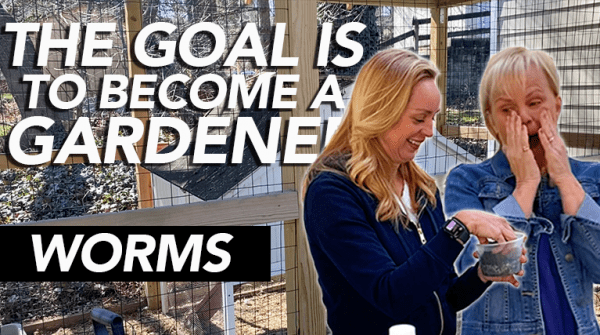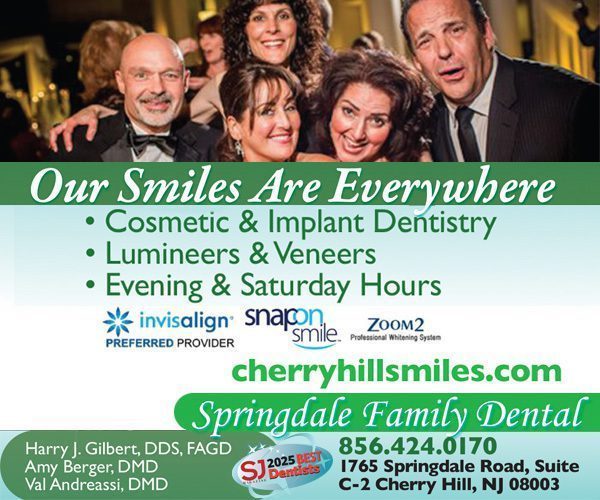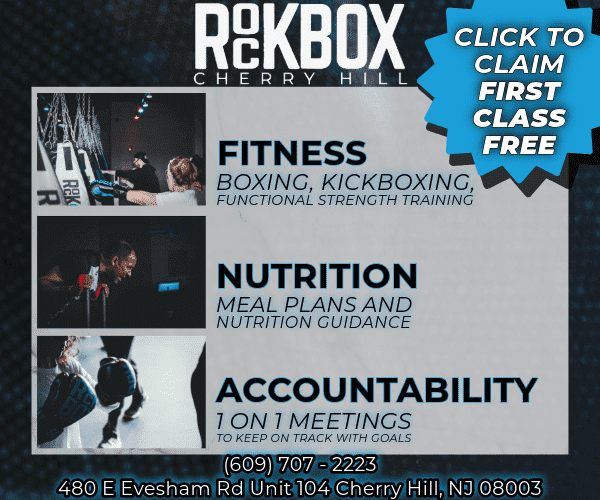Over the years, significant progress has been made in the treatment and care of people with intellectual and developmental disabilities. But maybe even more impressive are the changes in perceptions and attitudes toward this population. The specialists we gathered for this important roundtable all share the same belief: People diagnosed with a disability still have other abilities. If you take a few minutes to get to know them, you’ll see that for yourself. You’ll see that everyone has something to offer the world. Everyone.
Participants:
Stefanie Riehl Executive Director Larc Norcross School
Jennifer LeComte, DO Medical Director Rowan-Virtua Integrated Special Needs Center
Wendy Aita, PhD Co-Director Rowan-Virtua Integrated Special Needs Center
Ed McDonnell Commissioner Camden County
Pamela Brown Vice President Oaks Integrated Care
Karen Lindgren, PhD Chief Clinical Officer Bancroft
Adam Roth Regional Director of Disability Services Jewish Federation of Southern New jersey
 The term “special needs”
The term “special needs”
When we use the term “special needs,” we’re ultimately othering somebody. We’re calling somebody out and saying you are different in a way that we don’t know what to do, and that doesn’t help us achieve the equity we’re looking for, to recognize that people with disabilities can accomplish anything they set their minds to. They might need a helping hand along the way, but don’t we all.
Adam Roth
We’re starting to get away from the term special needs. Although we look at it as maybe we’re trying to be nice, saying someone is special may not necessarily make them feel that way. I love the term “differing abilities.” Because we all have differing abilities. Your talents and strengths are not the same as mine.
Stefanie Riel
The words we use matter. When we talk about people who have a disability, it is preferred to describe the individual disability, as opposed to using a catch-all phrase, and that’s because no one phrase can capture the whole span of individuals within a specific category of disability.
Karen Lindgren
Once you put that label “special needs” on someone, people look for the problem or the disability. I’d rather say that someone needs additional support. I prefer our people to be introduced by their name.
Pamela Brown
I use the term “people with different abilities.” We’re trying to use strength-based language. The mission we have is to make sure people with different abilities can get primary care where everyone else gets their care. So if you identify something that’s sort of niche based, then not everyone can go there.
Jennifer LeComte
We focus here on ability. We talk about being differently abled. Emily Ladau, who wrote a book called “Demystifying Disability,” talks about not looking at this as something negative. This is who I am. This is how I interact with the world. That’s what we need to focus on.
Wendy Aita
The stigma
Stigma is another word for lack of exposure. I don’t know a single person who knows someone with disabilities who stigmatizes them, because in that process of exposing yourself to various people, you realize that the stigma is ridiculous. One of the reasons Camden County has so many programs – whether it’s Miracle League Baseball, adaptive rowing, ice skating – is because these programs put folks with disabilities together with folks who do not have disabilities. That exposure over time is a real solution to eliminating stigmas, and I think we’re getting there.
Ed McDonnell
It has gotten better, but it’s still there. Our individuals have proven they can do more. They can work in the same settings you and I work in with some job coaching, with some assistance. And parents advocate more for their children now. They don’t hide them. So it has gotten better, and can get even better, if we just give them opportunity.
Pamela Brown
In some ways, we’ve come pretty far. But we also know we’ve got a long way to go. In a 2022 research study looking at physicians and their attitudes towards people with disabilities, 82% of them felt people with disabilities had a poor quality of life, and many of them were saying they were not confident in their ability to care for them. I think that’s due to lack of proximity and lack of training.
Wendy Aita
Some stigmas have changed for the better, because there’s representation in media that didn’t exist before. There’s a new movie on Disney+ that focuses on a girl with cerebral palsy who uses an augmentative communication device. So that’s showcasing a disability that isn’t talked about often. And there’s been a lot of conversation on what it means to have a wheelchair user as an actress in the movie “Wicked.” When people can see that people with disabilities can do anything and everything a neurotypical individual can, that’s when the stigma changes.
Adam Roth
While the stigma has improved, it still creates barriers. How do we know this? We know this because individuals who have intellectual disabilities have smaller social circles. They have poor access to community events. They have poor healthcare outcomes.
Karen Lindgren
If the foundation was stronger, then I wouldn’t worry as much. I do have hope though because, especially in New Jersey, we have organizations like The Arc of New Jersey, and our political leaders have put a lot of work into having grants for increasing access. They’ve afforded us some grants to promote reproductive health and sexuality for our patient population. There’s still a lot of hope.
Jennifer LeComte
It’s gotten better, of course, but there’s so much more work to be done. One of the ways we try to do our part is we have a Bring Your Family to Work Day at Larc. We’ve had an inclusivity day with a local middle school and a baseball team. It’s very common for one of these visitors to say, “I never knew a Larc kid could do that.”
Stefanie Riehl
 Conversations with parents
Conversations with parents
I answered a call from a father who was calling about his daughter who had this rare syndrome. He says, “You probably never heard of it.” He gives me the technical term, and I give him the slang term, and he says, “Oh, you’ve heard of it.” I said, “Well, for you, it’s very rare, but we have seen it before.” We enrolled his daughter, and a year later, I asked him how everything had changed. He said, “When we first got her diagnosis, I thought this was a sentence. Now with Larc, I understand it’s just a new beginning.”
Stefanie Riehl
For many parents, it is a flashbulb memory for them when they hear the diagnosis, and it can be a traumatic experience. We need to be honest, confident, focus on the capabilities, focus on the strengths, and not be the predictor of doom for the future.
Wendy Aita
Delivering a diagnosis really involves skill. What I teach my med students and residents is to start with, “Congratulations. You just had a beautiful baby.” The Cerebral Palsy Foundation has a campaign, “Just say hi,” because providers lose their basic communication skill of looking someone in the eye, saying hello, shaking their hand when they walk in the office. We don’t deliver the message in the joyful way that bringing someone into the universe is. We have some work to do on that. It’s something I’m really passionate about.
Jennifer LeComte
 A family’s role
A family’s role
Larc school was founded by a group of families who couldn’t find a place for their kids, and several of those families are still active on our Board today. So family is the very foundation of all we do.
Stefanie Riehl
One of my goals is creating connections with families to help them recognize how our system can help them, regardless if their loved one is 8 months, 18 months or 8 years old. I want to meet them where they are, so they know we’ll always be a resource for them. We make those connections and ensure that no one is left behind.
Adam Roth
The caregiver is a core member of the team, but we have to keep the patient at the center, even children, because the ability for them to be independent and make decisions for themselves has to start with involving them in making decisions and allowing them to sometimes get it wrong. There’s this perception that the neurotypical population can make mistakes, but people with different abilities can’t. There are very simple things we can do to promote autonomy and self-care. We’re all frustrated when our patients get older and they’re not participating in their care, but we’ve never empowered them to do so.
Jennifer LeComte
Recently, we had a gentleman in our program who is very aggressive, and mom was really frustrated and wanted to know what we were doing that was working, and what we were doing that wasn’t working. She was frustrated because her son was getting more and more aggressive. We talked for 40 minutes. She told me what her heart was saying. When I listen to parents, they feel heard because they’re already frustrated that they have a child with a developmental disability, particularly those children who are aggressive that no other agency wants, but Oaks will always, always, always take a chance. I always believe we can help.
Pamela Brown
Parents are the experts on their kids. Nothing we do as professionals is going to be successful without parents giving us input every step of the way. Everything we do needs to be in lock step with families, or we’re just not helping them.
Karen Lindgren
We see individuals as they age out of pediatric care into adult care. However, parents have been in the role of being the expert for that individual, so that can be difficult to negotiate with parents. When a patient is over 18, they deserve to have private time alone with their physician and in their therapy appointments – just like everyone else.
Wendy Aita
Karen Widener, who is director of our programs for folks with disabilities, believes families are the heart and soul of our entire undertaking, and I tend to agree with her. There is a great camaraderie among our families. I think because of our program’s longevity, a lot of the same people are part of our programs, unlike kids who go through school and then graduate. Our families participate in these programs for a long time, so they have opportunities to interact with each other.
Ed McDonnell
 Early Intervention
Early Intervention
Early intervention is a program that starts at birth through the age of 3 for a child who’s been identified as not having progressed along developmental milestones. It provides not only assessment, but multiple specialists who can come into the home to help get that child back on track with their development. It can include speech therapy, occupational therapy, physical therapy, plus social and emotional type therapies. It can also provide the family with the support they need.
Wendy Aita
A misconception about early intervention is people think it comes from the healthcare system. It actually comes through the education system. That’s often the biggest barrier, because anytime you think it’s a health concern, you think you need a script from a doctor. But a parent can contact the schools and schedule an assessment. There is zero harm in listening to that inner voice and getting additional information.
Jennifer LeComte
Early intervention is critical, and it is a right of every child. Early intervention can alter the trajectory of a child’s path from the get go. We strongly recommend that parents who have concerns about their child have their child assessed. You’ll be setting up your child for the best possible support.
Karen Lindgren
 Cool technology
Cool technology
The coolest technology at Larc has to be our eye gaze. The eye gaze is a system that uses someone’s eyes as a computer mouse. The eyes lock on to an object or an icon or a word, and then the computer will say the spoken word for the child to communicate. We have tons of technology and tons of equipment in the building – about 400 pieces. We have 100 students, but each student may require three or four pieces of equipment to get through their day. And we have it all.
Stefanie Riehl
We’ve seen all sorts of positives for virtual reality, but we want to understand who it works for and how it works best. Can virtual reality orient someone to a new environment before they get there – so for a kid who’s scared of a doctor’s office? Can you use virtual reality for meditation or bubble popping when someone is feeling distressed to help soothe them? We’ve also partnered with St. Joseph’s University to try to understand how AI humanoid robots can augment the care we provide. But again, we don’t want to bring in a technology just to bring it in. We want it to provide something above and beyond what we can do as humans.
Karen Lindgren
A lot of our technology provides access. Most of us get basic vital signs recorded, like weight and height, when we show up to a doctor’s office. But we have people who use wheelchairs or walkers – a lot of them don’t get weighed. At RISN, we have a ceiling lift that can weigh patients, and we have wheelchair scales. We can get a basic vital sign, which is really important. We think every doctor’s office should have equipment like this.
Jennifer LeComte
We use EMDR, Eye Movement Desensitization and Reprocessing, which you can utilize by moving your eyes back and forth. We also utilize something called a Buzzy Bee that vibrates at a frequency that excites the motor neuron so you don’t feel the needle when you’re having blood work done. We have a full sensory room in our office where individuals can choose to have their lab draws done. We utilize anything that can help somebody get better access and/or be able to communicate with us.
Wendy Aita
 A unique need they fill
A unique need they fill
Data shows that patients with intellectual and developmental disabilities are four times more likely to die due to preventable causes, and that’s because of the assumption that they don’t need what everyone else needs. We know with ADA, we have to make accommodations for people with different abilities. The easiest accommodation, and the most needed, is time. Our patients need time to tell us what’s going on with them, to use their communication devices, to allow support people to be part of that treatment. So truly, I think the biggest opportunity we have is allowing enough time for our patients to have access to the things they need.
Jennifer LeComte
We have a residential program, which is based at our Weinberg Commons, where we have 32 units. I say units because we have eight quad settings, and each quad has four separate apartments. So every resident has their own apartment with a small kitchenette, living room, bedroom and private bathroom, and then they have shared common spaces. We work with families to help them recognize that while the loved one is living with us, they have rights and expectations to privacy. We’re here to help them navigate what it means to be an independent, gainful employee of our community.
Adam Roth
I have a really good story about a fellow named John. John was 7 years old and had yet to speak. From a physical standpoint, he was fine. Over the years, I had come across research about the relationship between horses and kids with disabilities, so we started a program called therapeutic horseback riding. So John and his mom came to our horseback riding program, and I don’t think it was six months of riding that horse when John started to speak. It was one of the most dramatic successes we’ve ever had. Now obviously, his parents were working with him and he was doing other things, but he connected so well with that horse. He’s now 18 years old, and he speaks as well as you and I.
Ed McDonnell
 What they’re proud of
What they’re proud of
We have an emergency capacity program where individuals come to us because there’s an emergency – a parent could be ill or their guardian could be having some hardships. If we get the call today, they come today. So now they’re in this new environment, and everything’s chaotic. But within six months, we can pretty much say they’re ready for a group home or supervised apartment. Over the years, I’ve been able to open nine additional group homes because of this emergency capacity program. It was an emergency, they came to us and we were able to place them somewhere permanently, where they’re happy.
Pamela Brown
My favorite program is from a grant we have for developing the workforce, so med students, residents and physician assistants who go into primary care can feel comfortable working with people with intellectual and developmental disability. It’s a five-year program. We really focus on wellness: Food is medicine, movement is medicine, mindfulness is medicine, music and art are medicine, and medicine is medicine. But mostly we talk about: How do we get people off the medicine they’re on?
Jennifer LeComte
We have a huge fundraiser where we shut down the Ben Franklin Bridge for a run. One of the things I am proud of is year after year, we take some of our students and actually push them in adaptive racing chairs through the finish line, so they can not only experience what it’s like to do a race, but they can experience what it’s like to do a race as part of our community.
Stefanie Riehl
All our programs bring people together, and enrich their lives. We have 20-30 programs in total, and we have several hundred folks involved, and the programs all focus on the same premise: Give opportunities for folks with disabilities to do most things other people can do. We’re proud of that.
Ed McDonnell
A really special program we have is Soups and Sweets. It’s a culinary training program where we work with a small cohort of students on what it means to actually work at a commercial grade kitchen. Many of our graduates have gone back to their home communities and are working in the cafeterias of their public school or perhaps in a cafe down the street. We want to give members of our society the ability to give back in a meaningful way – in a real job with real, tangible skills.
Adam Roth
72% of women with intellectual and developmental disability don’t get routine cervical cancer screenings. Pap Camp is a way to help individuals who have a cervix get prepared for their first or their next pelvic exam. It includes what to expect from their provider, including the ability to have a stop signal. They learn how to calm their mind. We talk about any sensory challenges, and they can come up with what might be more comfortable for them. Everything gets written down in their chart so the provider can read it, and they can have the accommodations they need.
Wendy Aita
I’m proud of our continuum. Bancroft is committed to having programs for every step of your journey, so from diagnosis to preschool and early education, through the school years, through day programs and up to a retirement program. We have a retirement program for people with disabilities where they can live in this beautiful group home environment. They can be retired and have high quality of life. What makes me proudest is there’s no point where the safety net falls through, and you’re left stranded.
Karen Lindgren
Greatest advancement
In 2023, the National Institute of Health finally identified people with disabilities as being a marginalized population. Up to that point, they were not identified as a marginalized population. So this gives the opportunity for more funding and more studies to be done to improve health equity in people with intellectual and developmental disabilities.
Wendy Aita
The biggest advancement is the legislation that allows all kids to have free and appropriate education. If that hadn’t passed when it did, I don’t know that Larc would be here.
Stefanie Riehl
The biggest advancement is what we do in Camden County: Getting people with disabilities out of the shadows and into the limelight of day-to-day life. We say, “What do other people do? Just regular people, what do they do?” They swim, they play tennis, they ride bikes. We can modify all of those things so our folks can do them too. For example, we have Miracle League Baseball. In some places, it’s called Buddy Ball, because each player has a buddy. In our case, high school kids volunteer or sometimes it’s a sibling. So the greatest advancement is that we – hopefully us and others – continue to have programs that connect non-disabled folks with disabled folks, so they get to know each other.
Ed McDonnell
In the 25 or so years that I’ve been doing this, more people have been able to get jobs as a result of advocacy and employers understanding the need. Even police and ambulance departments have been trained to understand what’s really going on if they get a call for a person with a disability. We’re training people in the community about the disability rather than hiding the disability. That has made a difference.
Pamela Brown
Our technologies have advanced care significantly. But how we ensure access to that care across the spectrum has lagged behind the technology. I see technology advances all the time, but how do we get it into the hands of the people who need it most? That has been a big barrier.
Jennifer LeComte
I think the best advancement has been a person – Judy Heumann, who is considered to be the grandmother of the Disability Rights Act. She was an activist who was disabled, and without her advocacy and work, most of what we see today would not have been created.
Adam Roth
In the past 10 years, more and more resources have been diverted to people who have autism and intellectual disabilities because of increased national attention. For instance, New Jersey and the federal government supported us with smart homes, which are a positive advancement for individuals, because they enable a degree of independent living that might not have been possible before. If a smart home can help you with your schedule or help with recipes or give you reminders, that will enable people to be independent in ways they’ve never been before.
Karen Lindgren
Why their work is important
I was diagnosed with a specific learning disability when I was in the sixth grade. I’m dyslexic, and I spent 7th grade relearning the alphabet. I can recall hearing the conversations around me: “Will his future be limited if he’s identified this young as someone with a disability?” But you’re never limiting somebody’s future by having something documented. I’m proud to say that I love school and education, and I love serving people with any ability they have. But it’s deeply connected to who I am as an individual.
Adam Roth
I feel privileged to do this work. The individuals we support are underrep-resented in everything that happens, and at Bancroft, we give them a voice in education and advocacy. We break down barriers.
Karen Lindgren
It’s very personal. When I was pregnant, I had the prospect of having a child with special needs. I can’t tell you I know what it’s like to actually have that child because, as it turned out, my son was born healthy. But at that point, I knew I needed to make changes in my life to serve these families to the very best of my ability, even though I’m never going to be able to serve them perfectly, because I don’t walk in their shoes. I don’t think anyone in my family realized that this would change our lives and not only turn into a job but turn into a vocation.
Stefanie Riehl
I think government has a responsibility to do whatever we can for all our citizens. And folks with special needs are obviously a major part of our community, and they deserve whatever we can do to enrich their lives, to make their lives all they can be. What our programs do is what government should do. It’s why we run to get elected, so we can do good things for people.
Ed McDonnell
I’ve always been drawn to seeing the strength in marginalized populations and giving them a voice when they don’t have one. As a psychologist, I felt like this population is not only misdiagnosed with regard to behavioral challenges but also underestimated in their ability to benefit from psychotherapy. I see so much potential that other people don’t see. I want to help individuals with disabilities live their best life, thrive in their community and really enjoy themselves.
Wendy Aita
This work matters, because we just need to pay a little bit more attention to experience all the value that a person with a different ability brings to our world. I show up happy every day to be interacting with this patient population.
Jennifer LeComte
Many, many years ago, on my first day on a job as a direct support professional, I was aggressed upon, and I thought, I don’t want to do this. But I had a supervisor who helped me understand the need, and I became compassionate for these individuals. I love what I do, because I see that we can make a difference. If you do this kind of work, and you don’t fall in love with the work, then this is not for you. It really is a heart thing. I just enjoy coming to work every day.
Pamela Brown
What we all should know
There is something called disability pornography. When everyone says, “Look at what a wonderful thing this person is doing, asking the person who has development disabilities to go to the prom.” They don’t want to be seen as their disability. Expect that they are capable of doing things without having to be a superhero. They don’t want to be superheroes. They just want to be seen as everybody else.
Wendy Aita
Be open-minded and know that everyone has a story, and the person who is disabled doesn’t want to be disabled, but it’s all they know, so treat them like you would treat anybody else.
Pamela Brown
When you see someone with some sort of a difference, in most cases they would rather you go up to them. They would rather you say, “Hey, I’m curious. Or, can I introduce myself?” Treat the individual with respect, look them in the eyes. Assume they are understanding everything you are saying. Don’t talk about them. Talk to them.
Stefanie Riehl
Every person is just a person. There’s nothing inherent in any diagnosis that’s scary or earth shattering. It’s just a person. I would really encourage people to focus on the humanness of each person they interact with, rather than the label.
Karen Lindgren
A lot of people approach folks with trepidation – you don’t want to do or say the wrong thing. The key is to be yourself. It’s not a hard thing to relate to a person with disabilities.
Ed McDonnell
I think the biggest piece of advice I could give is to ask how they like to receive information. Our go-to is to deliver information the way we like to receive it. You may like to talk about the problem, but the person you want an answer from needs to read it. Take yourself out of the equation and in that case, write an email with specifics, and you’ll get the answer. When you’re meeting somebody for the first time, the best thing you can do is ask questions, ask respectfully, and maybe lead with, “How do you like to receive information?”
Adam Roth
What work has taught them about life
This work teaches you to not sweat the small stuff, and most of it is small stuff. You look here and so many of these kids have every reason to give up, but they don’t.
Stefanie Riehl
Don’t complain about something you don’t like. Do your part. Do what you can to change whatever it is.
Pamela Brown
Getting through life is a team sport.
Wendy Aita
It’s taught me that healthcare isn’t just of the body. It’s of the mind, of the community. It’s food, it’s music, it’s art. It’s community. It’s getting back to love. That really is what promotes wellness.
Jennifer LeComte
My work has made me a more optimistic person and has helped me to look at the bright side of life.
Karen Lindgren
You should always advocate for yourself and those around you, because if you don’t, nobody else will.
Adam Roth



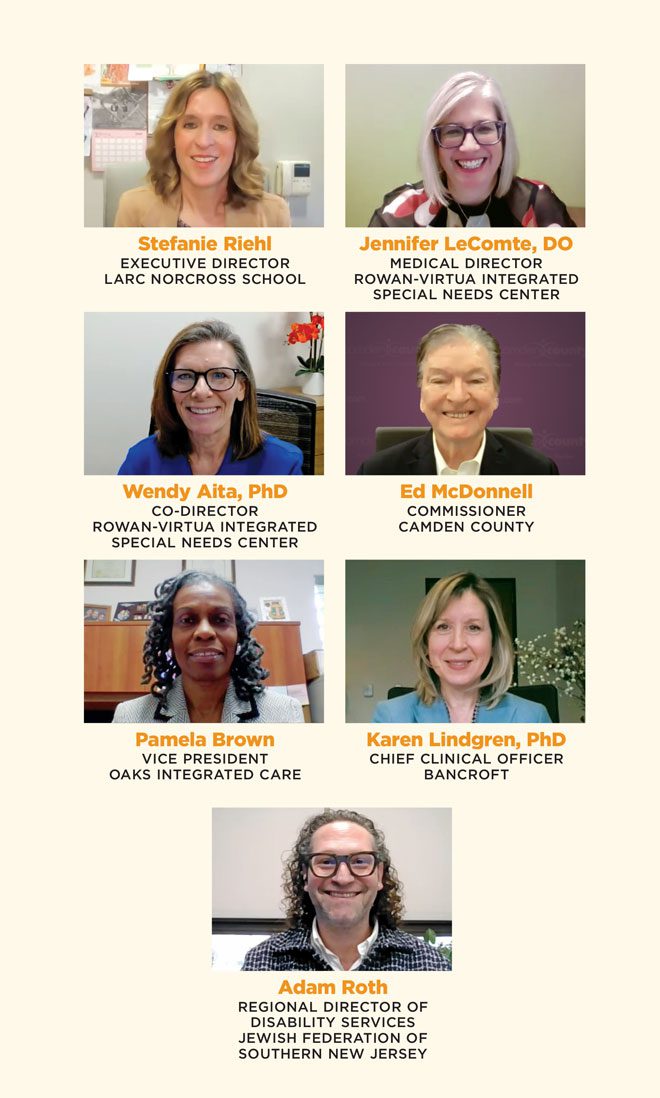
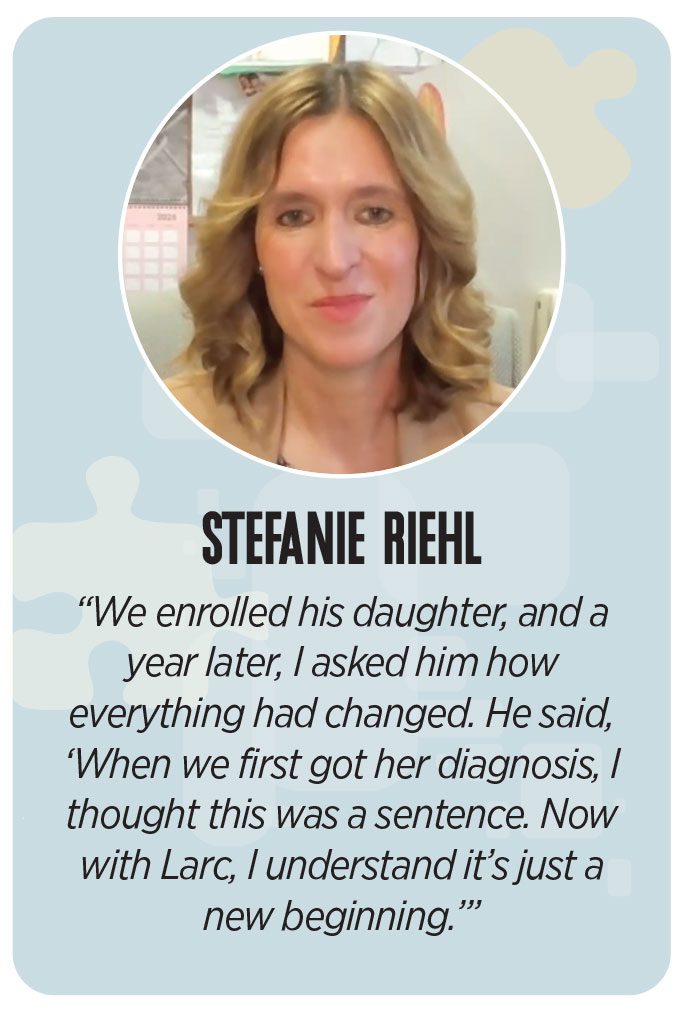 The term “special needs”
The term “special needs”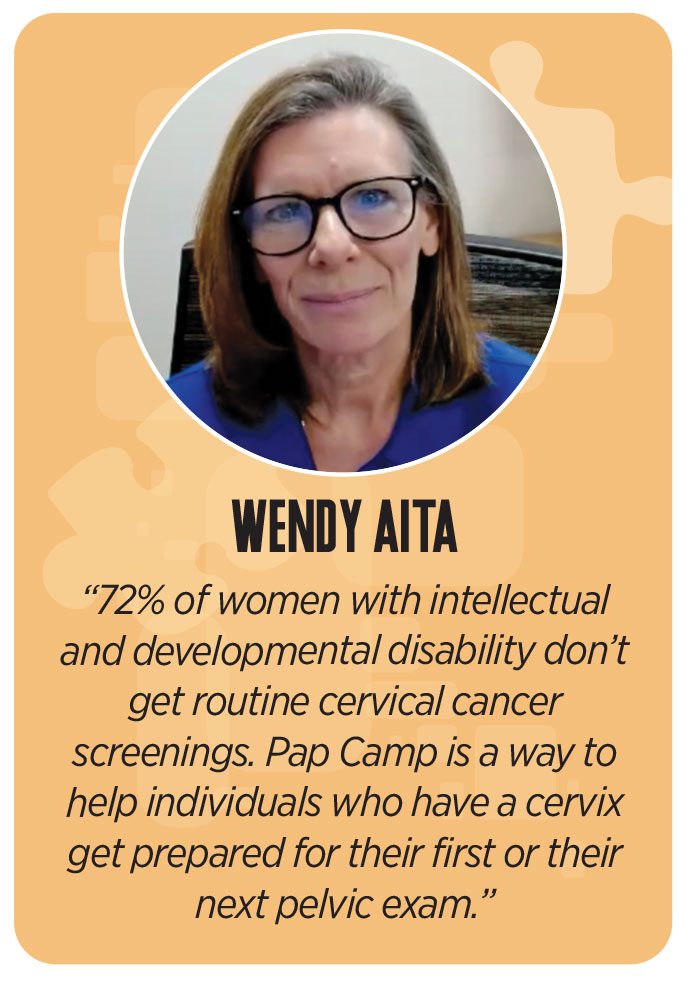 Conversations with
Conversations with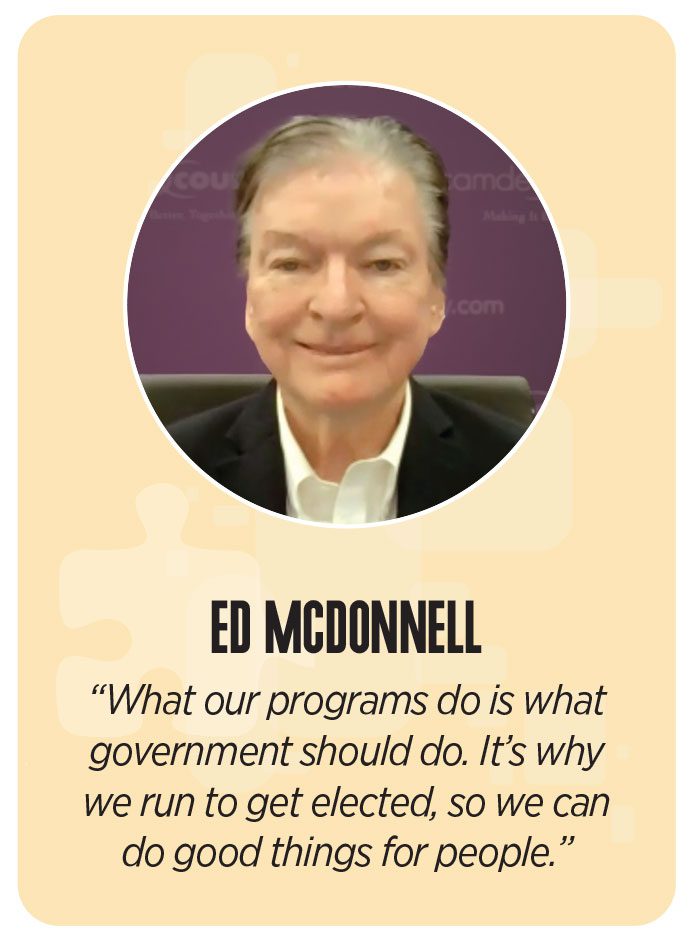 A family’s role
A family’s role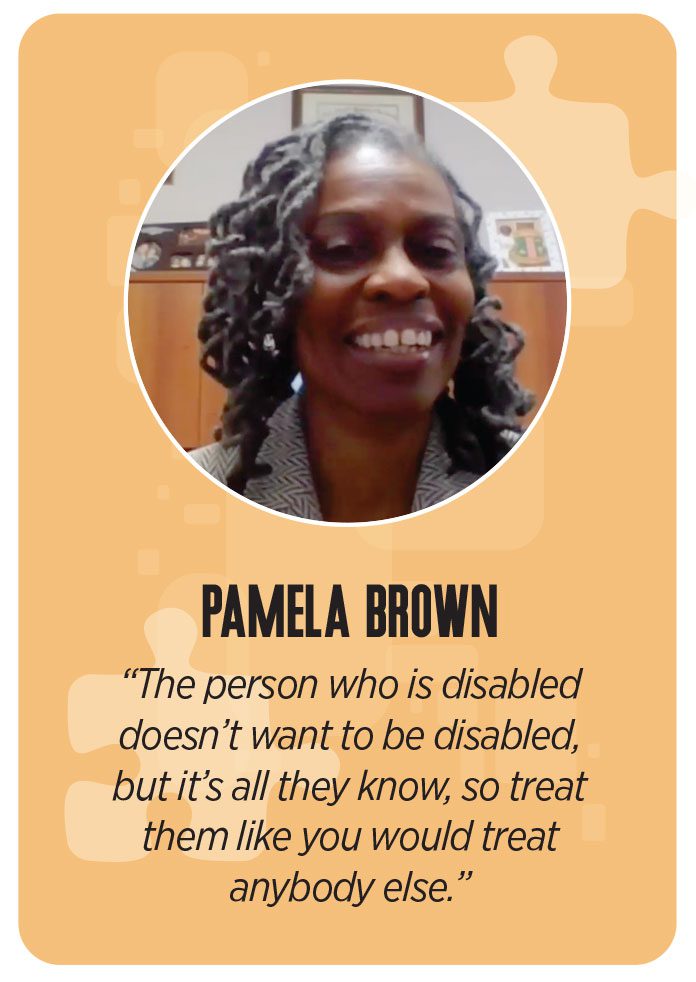 Early Intervention
Early Intervention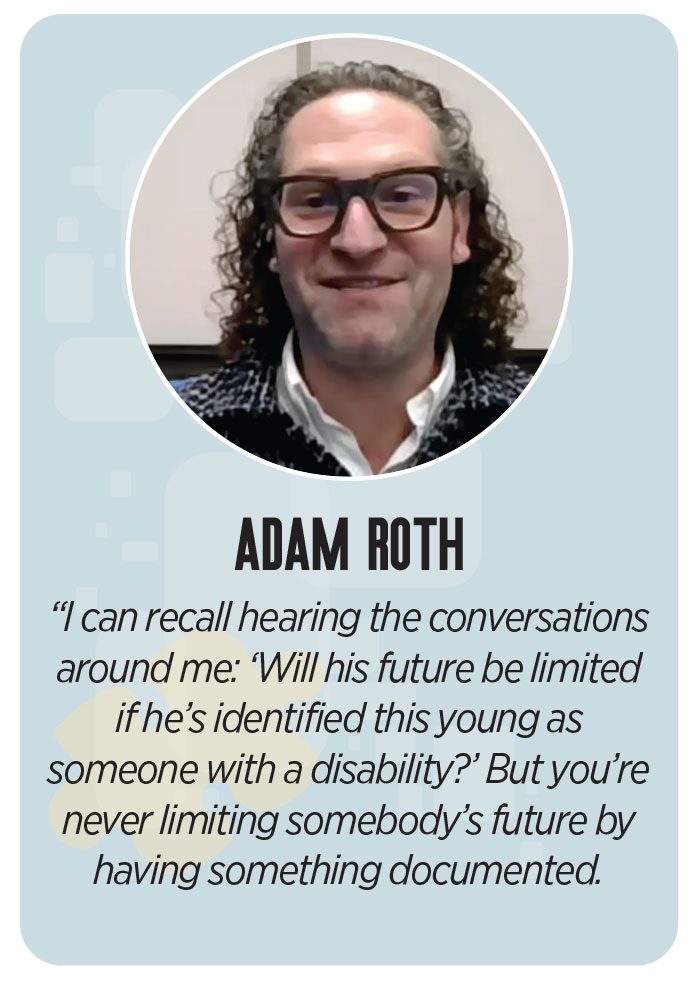 Cool technology
Cool technology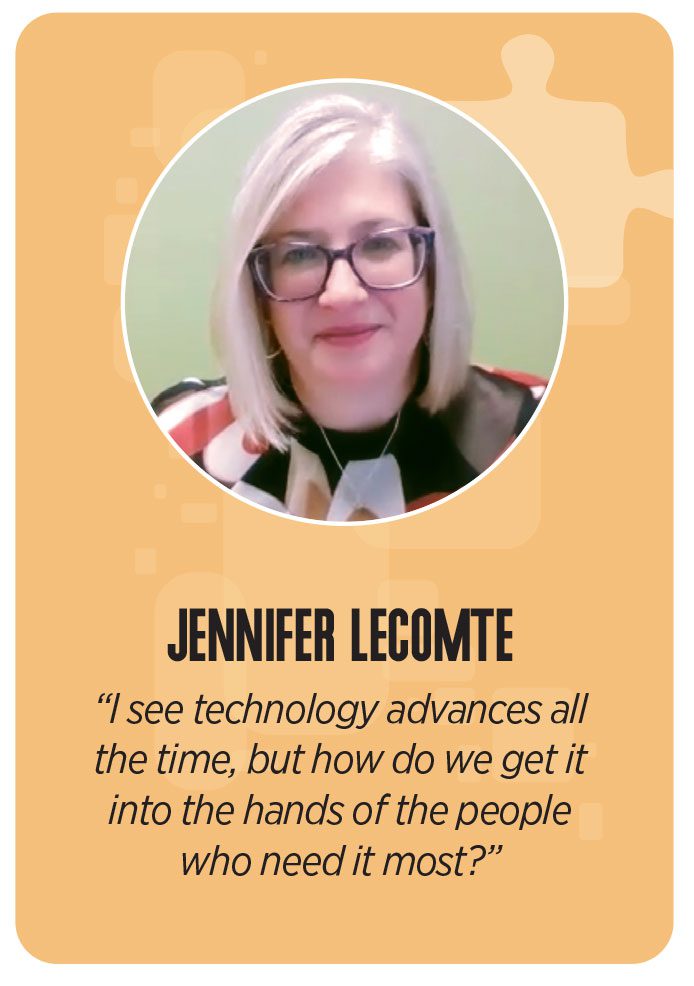 A unique need they fill
A unique need they fill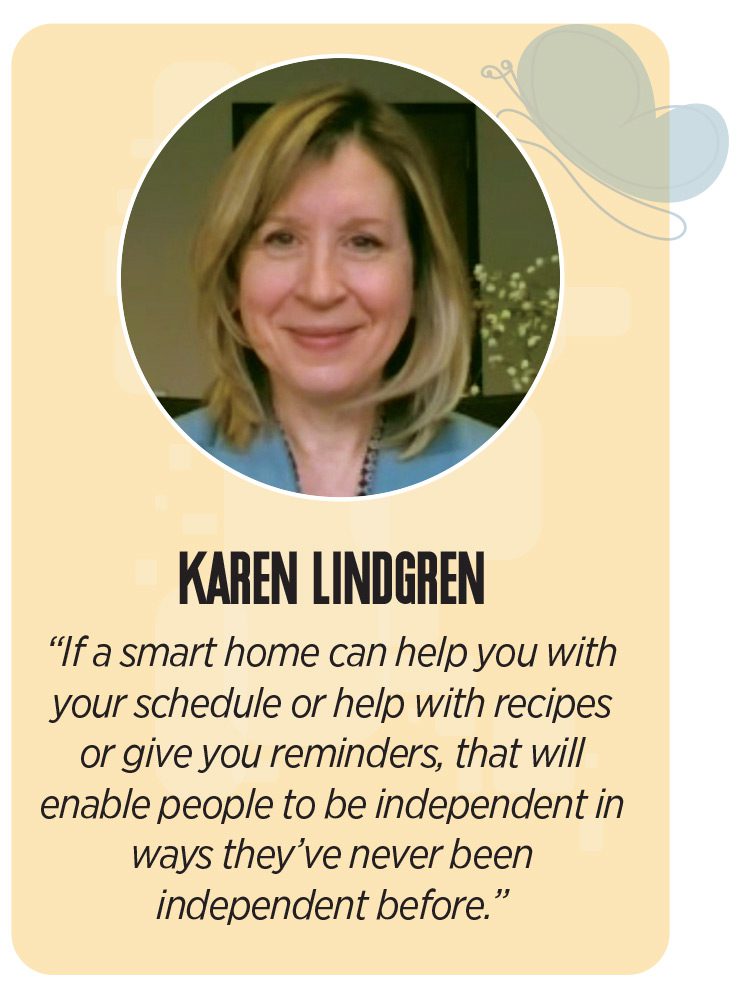 What they’re proud of
What they’re proud of




